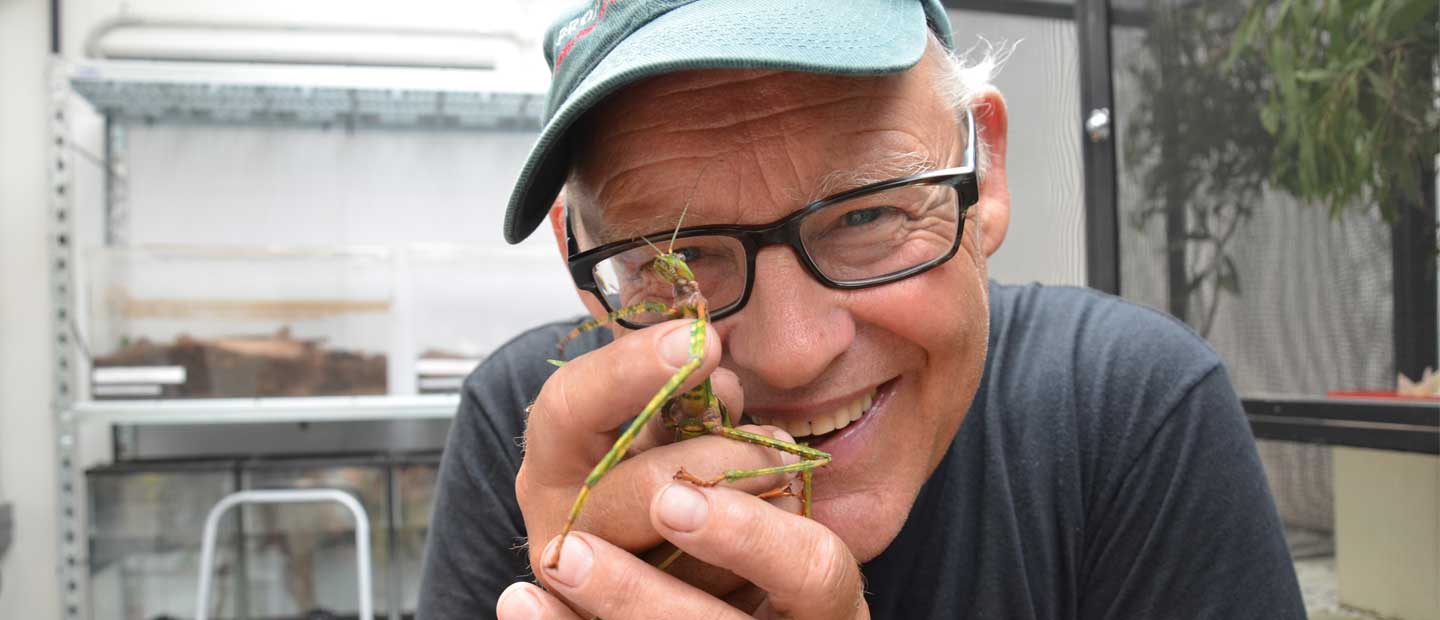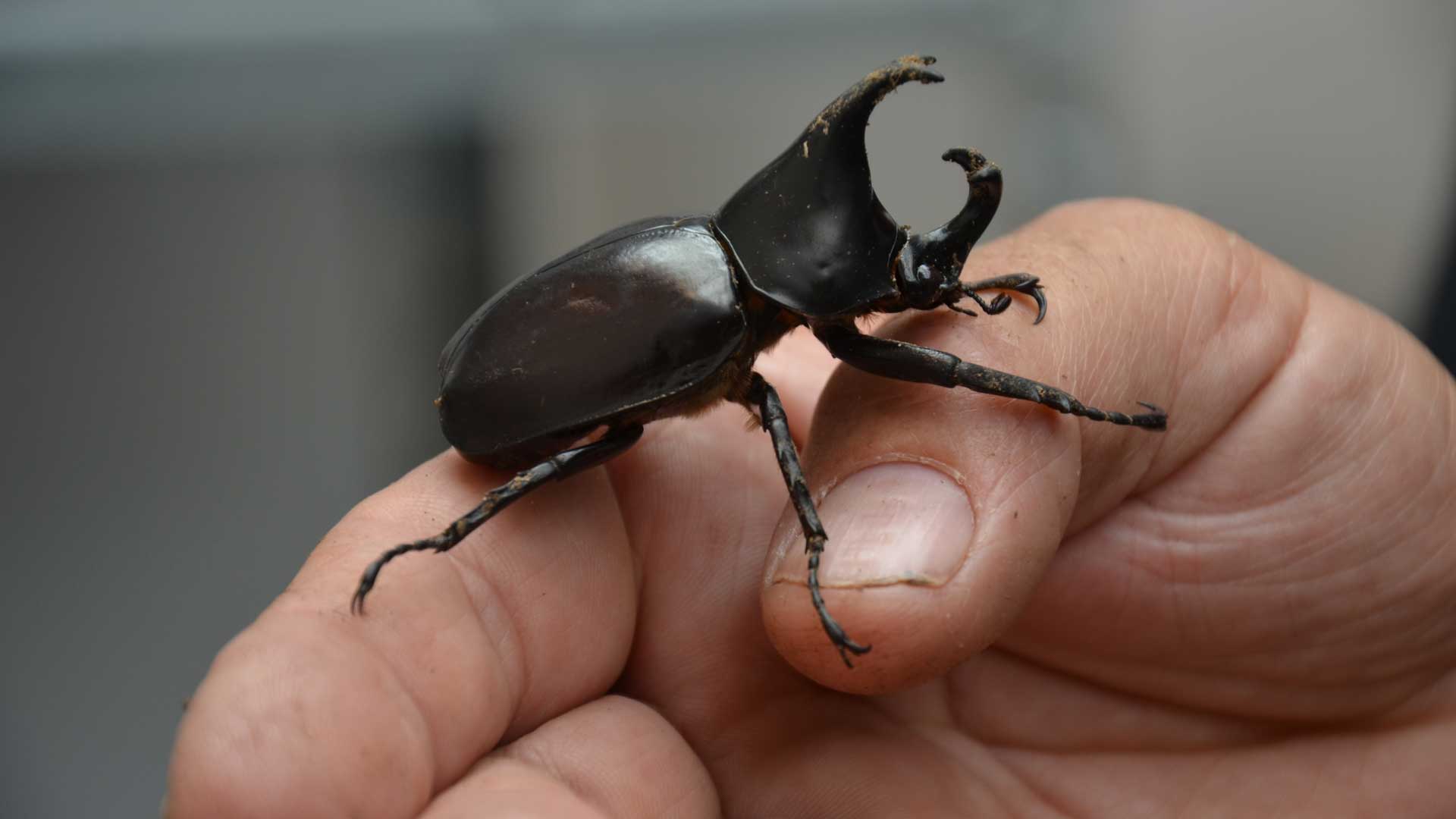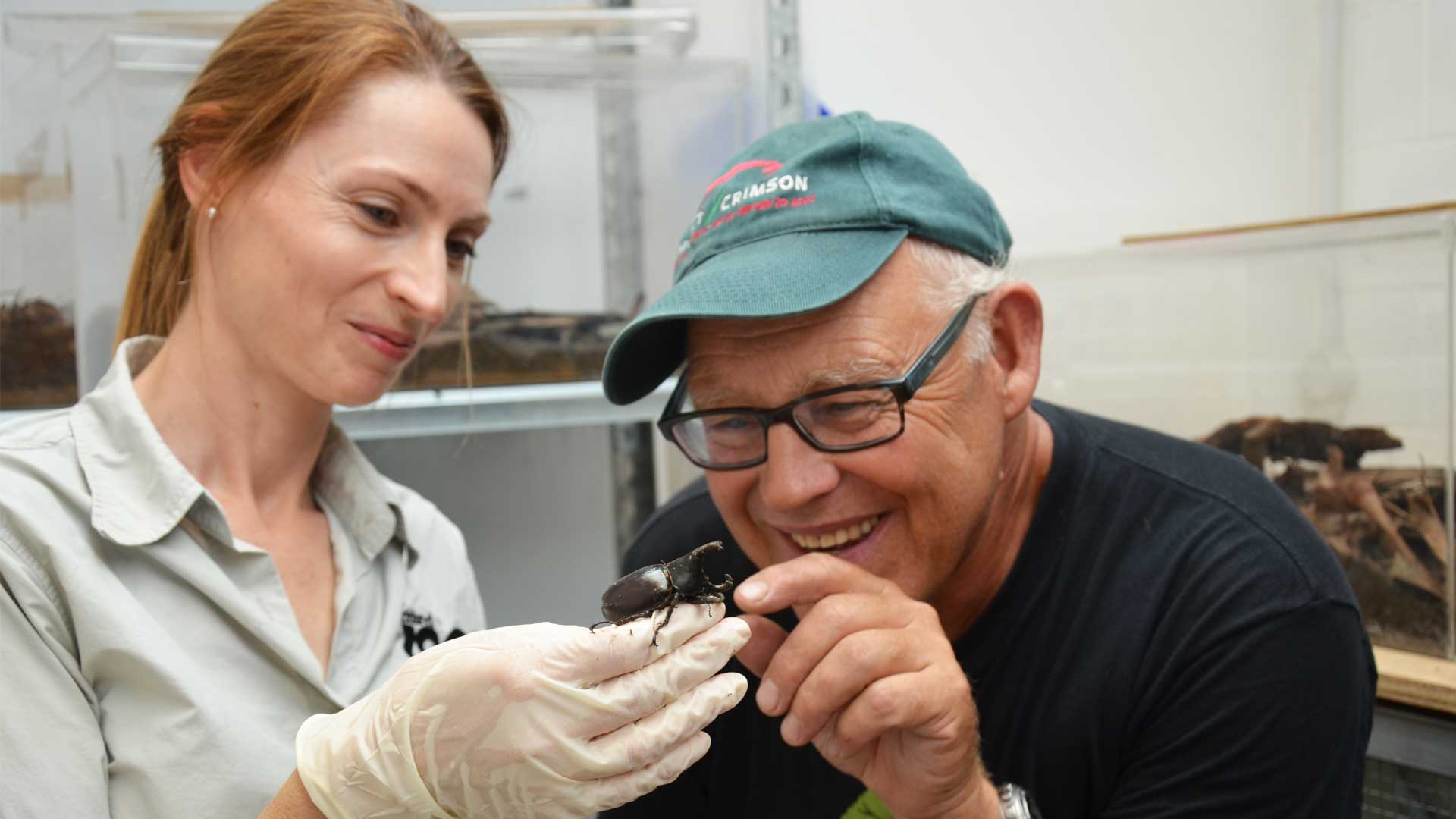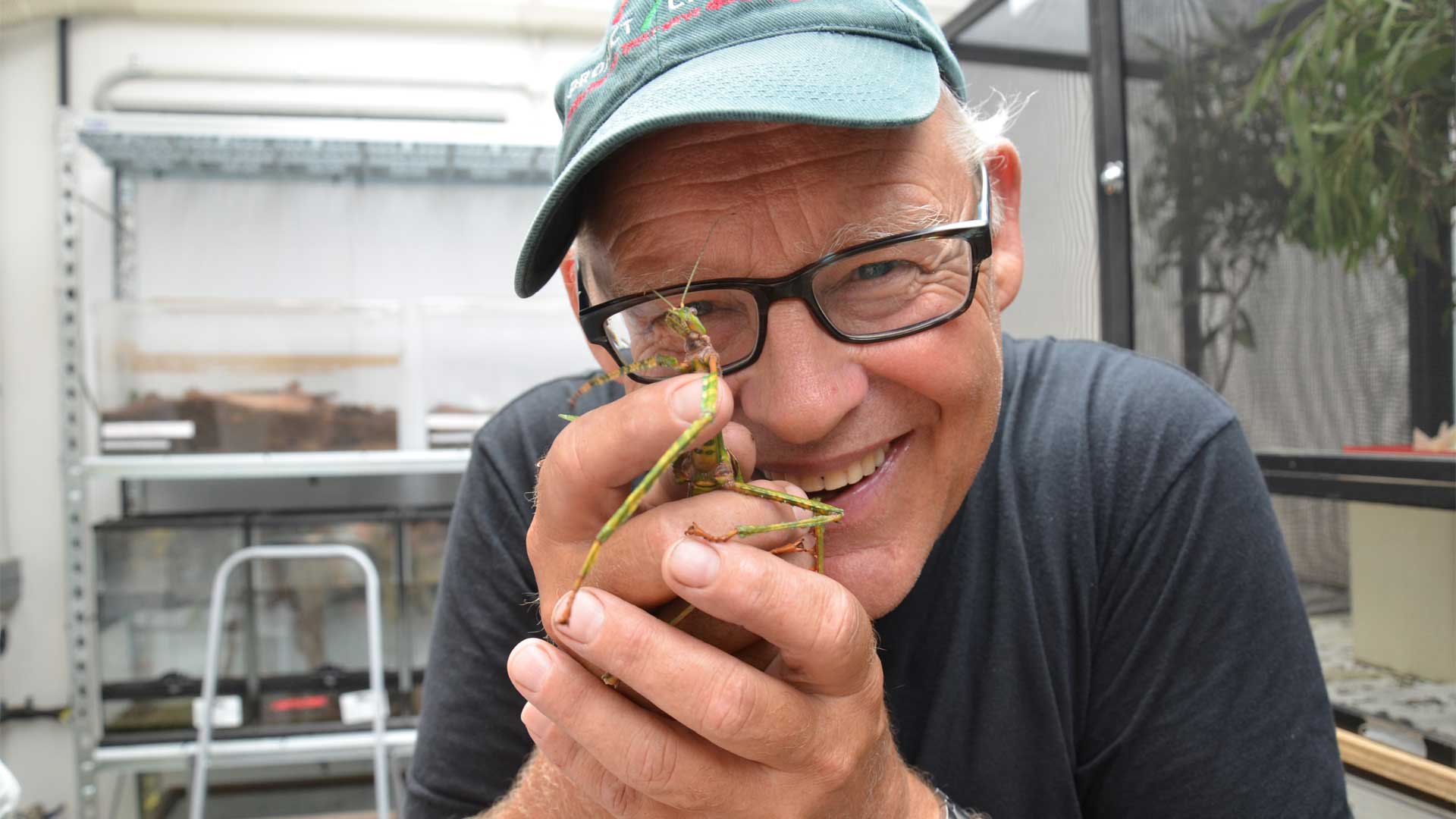New Zealand’s world-famous ‘Bugman’ and long-time Auckland Zoo friend Ruud Kleinpaste dropped by recently to see and talk bugs and spread the love for these genius stars of nature - flies and cockroaches included!
What sparked your life-long love for bugs?
I got a pair of binoculars when I was seven years old. I was bird mad and birds led me to bugs. My father also encouraged me, plus I had a seriously good biology teacher, and later, at university a study friend’s father who was an entomologist, inspired me. The rest is history. But I have to tell you the ‘Bugman’ is really a fraud as I studied forestry not bugs; it was my personal passion that drove me. It wasn’t until seven years ago in the Netherlands that I set foot in the entomology department of my university for the very first time!
What’s your favourite bug and why?
It’s always the one I’m looking at right now – for instance a rhinoceros beetle. These guys develop inside the trunk of palm trees; the male adult beetles are very strong and often fight with each other for females and territory. They invented WWF wrestling!
We can all study and learn so much from all bugs. Bugs are part of nature and here are some examples: Nature doesn’t know the concept of waste. Nature only uses real sunlight. Nature lives where she works – there’s no factory on the outskirts of town, so it needs to keep things pollution-free. Plus, nature only uses the energy she needs; and she’s not carbon neutral, she’s carbon positive.





